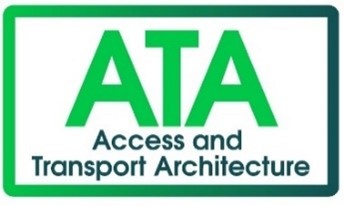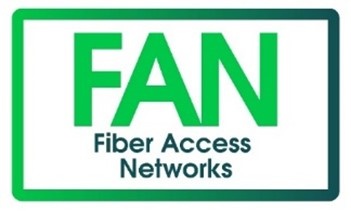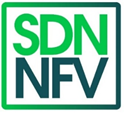Thank you to our Meeting Sponsor!
Manuel Paul, Squad Lead Network Convergence at Deutsche Telekom and President at Broadband Forum delivered a keynote presentation highlighting the importance of personalized and context-aware services and networks that adapt to customers’ future needs.
Paul talked about the need for standardization in the industry to respond to market demands of a fast-moving technical world, advised that agility and speed should not come at the cost of quality, and vocalized the importance of deployable standards. Collaboration between Standards Development Organizations was underscored as a key factor in achieving this and striking the perfect synergy between open-source software and open standards. He also talked about Deutsche Telekom’s focus to enable a better digital life for customers, the benefits of increasingly virtualized networks and cloud-based services, as well as the role that disaggregation is playing in making this all possible.
“Reliability and great customer experience is key, and the DT brand has connotations of great customer trust,” Paul stated. “Our customer complaints have shrunk by 90% over the past ten years and we remain committed in turning our customers into our fans.”
On helping develop standards within Broadband Forum, Paul said: “It is an honor to collaborate with this esteemed community of industry leaders and experts. On behalf of Deutsche Telekom, thank you for the opportunity to play our part.”
____________________________________
Work Area Updates
For a full list of all Technical Reports published by Broadband Forum, click here. Please feel free to share this information with your colleagues, so they are engaged and aware of the developments of this work.
For additional insight and to get involved, sign up for access to Broadband Forum tools and access your account using your company email address.
ATA rounds off successful quarter with IPv6 security project and new open broadband project launched
The Access & Transport Architecture (ATA) Work Area delivers scalable, dynamic, and flexible architectures to support highly resilient connectivity for the next-generation of responsive services and applications. ATA’s focus includes specifying frameworks and real-time tools to deliver predictive connectivity and service performance. Read the full Spring Meeting 2024 update here: https://www.broadband-forum.org/ata-rounds-off-successful-quarter-with-ipv6-security-project-and-new-open-broadband-projects-launched
Smart home activities grow in BUS; latest updates of TR-181 and TR-398 published
The Broadband User Services Work Area aims to explore the necessary work for delivering an operator-grade smart home and improving the subscriber experience. Read the full Spring Meeting 2024 update here: https://www.broadband-forum.org/smart-home-activities-grow-in-bus-latest-updates-of-tr-181-and-tr-398-published
Common YANG’s latest work shaping the future of NETCONF/YANG-managed access networks
The work area targets to specify YANG modules that are applicable to multiple work areas, provide support to those same work areas for their specific YANG projects, and maintain YANG Best Current Practices, processes, procedures, and tools. Read the full Spring Meeting 2024 update here: https://www.broadband-forum.org/common-yangs-latest-work-shaping-the-future-of-netconf-yang-managed-access-networks
FAN collaborates with other Work Areas to progress new standards; officially launches sustainability project
The Fiber Access Networks (FAN) Work Area specifies and maintains PON architecture and nodal requirements, PON abstraction and mobile backhaul requirements. It is also responsible for PON test suites related to PON conformance and interoperability, and compliance test plans related to XGS-PON, NG-PON2, 25GS, 50G-PON, and Physical Medium Dependent (PMD)/Transmission Convergence (TC) Layer. Lastly, it is responsible for PON YANG data model specifications. Read the full Spring Meeting 2024 update here: https://www.broadband-forum.org/fan-collaborates-with-other-work-areas-to-progress-new-standards-officially-launches-sustainability-project
PHYtx Work Area starts the third issue of TR-301 and continues efforts of the MoCA AccessTM Performance Test Plan
The Physical Layer Transmission Work Area aims to enable multi-vendor interoperability in deployments for both access and in-premises networks. Read the full Spring Meeting 2024 update here: https://www.broadband-forum.org/phytx-work-area-starts-the-third-issue-of-tr-301-and-continues-efforts-of-the-moca-accesstm-performance-test-plan
Two key documents on AIM and disaggregation published, with more specifications close to fruition for SDN/NFV
The SDN/NFV Work Area focuses on the introduction of Software Defined Networking (SDN) and Network Functions Virtualization (NFV) in conjunction with general purpose hardware to create the basis for cloud-based, edge, and access networks. Read the full Spring Meeting 2024 update here: https://www.broadband-forum.org/two-key-documents-on-aim-and-disaggregation-published-with-more-specifications-close-to-fruition-for-sdn-nfv
WWC continues Multi-tenant FWA efforts and Phase 18.1 work, IMS for 5G-RG and WWC CUPS specifications published
The work area aims to deliver more value with deployment options for integrated, wireline, and mobile operators and suppliers. It focuses on optimizing the Total Cost of Ownership by consolidating network, common control plane, and streamlined backend by a comprehensive, well-specified, deployed Wireless-Wireline-Convergence architecture and functions to deliver broadband services with the 5G Core. Read the full Spring Meeting 2024 update here: https://www.broadband-forum.org/wwc-continues-multi-tenant-fwa-efforts-and-phase-18-1-work-ims-for-5g-rg-and-wwc-cups-specifications-published
OB-CAS project to stimulate open innovation for the broadband industry; calls for involvement of application providers in data analytics and network automation software
The OB-CloudCO Application Software Development Kit (OB-CAS) project is set to create a network management application ecosystem for the broadband industry. The project will develop an open platform software environment to foster open innovation. Read the full Spring Meeting 2024 update here: https://www.broadband-forum.org/ob-cas-project-to-stimulate-open-innovation-for-the-broadband-industry-calls-for-involvement-of-application-providers-in-data-analytics-and-network-automation-software
The OB-STAMP project launches - a gamechanger for network monitoring
The OB-STAMP (Open Broadband – Simple Two-Way Active Measurement Protocol) tool aims to reduce the cost and time of deploying and implementing infrastructure for measuring network latency in service providers’ networks. Read the full Spring Meeting 2024 update here: https://www.broadband-forum.org/the-ob-stamp-project-launches-a-gamechanger-for-network-monitoring
OB-USP-Agent closes in on Heron release; will help ISPs roll out value-added services
The OB-USP-Agent (OBUSPA) project is focused on creating a reference implementation of the User Services Platform (USP) specification from an "Agent" perspective. It aims to help ISPs offer differentiated value-added services at a faster pace, allowing individual components of the network to be upgraded without the need to upgrade the whole firmware. Read the full Spring Meeting 2024 update here: https://www.broadband-forum.org/ob-usp-agent-closes-in-on-heron-release-will-help-isps-roll-out-value-added-services
OB-UDPST project team collaborates with a network operator regarding large-scale rollout
The Open Broadband-User Datagram Protocol Speed Test (OB-UDPST) project produces an open source implementation of a tool to perform IP layer capacity metrics and measurement. Read the full Spring Meeting 2024 update here: https://www.broadband-forum.org/ob-udpst-project-team-collaborates-with-a-network-operator-regarding-large-scale-rollout
OB-5WWC Project Team’s 5G-RG software architecture open for comments
Open Broadband-5WWC (OB-5WWC) is an Open Source project focused on bringing the full benefits of the 5G ecosystem to fixed-line services and offering a full end-to-end solution to operators. The aim is to create a reference implementation of the Broadband Forum specified Wireless-Wireline Convergence solution for 5G capable Residential Gateways (5G-RGs), providing shorter time-to-market for products and reduced development times and cycles. Read the full Spring Meeting 2024 update here: https://www.broadband-forum.org/ob-5wwc-project-teams-5g-rg-software-architecture-open-for-comments
For more on the work of The Broadband Forum’s Work Areas, please visit the wiki here: https://wiki.broadband-forum.org/display/BBF/BBF+Work+in+Progress+-+Projects%2C+Project+Streams%2C+and+Jira+Links
Upcoming BASe events
- ‘The Future of the Connected Home’ Omdia Survey Webinar - March 26
- BASe at OFC: Meeting Rural Broadband Needs with High Capacity PON - March 28
- PON Interoperability vBASe Webinar - April 11
- Future of PON Telco vBASe Webinar - May 9
- BASe at ANGA COM 2024 – Converging the Access to true Multi-Service Fiber – May 14 – May 16
Save the dates! Broadband Forum face-to-face 2024 meetings
- June 17-20, Summer 2024 Meeting, Incheon, South Korea
- November 18-21, Fall 2024 Meeting, the Americas (TBD)
Welcome to our new and returning members!
We welcomed a mix of new members and guest companies during the Spring Member Meeting 2024. We had 158 registered attendees, with 12 first-time attendees and 16 guests from 12 companies. Our new members include: Alethea, Evolution Digital, Go Fiber, Positron Access Solutions, Sichuan Changhong NeoNet Technologies Co., Ltd., Tadtelmax, and Veego.
Are you interested in becoming the next member of the industry’s leading standards body in defining broadband networks? Broadband Forum membership will not only accelerate your company’s progress but enable you to become a key influencer in developing 5G, the Cloud, the connected home and access networks.
We have a range of membership options for companies of all sizes, from startup companies to large corporations and not-for-profit organizations. Our new regional Operator Membership category has further opened participation; take a look for further details of the access level privileges, benefits and requirements.
To learn more about the benefits of membership, watch the video interview with Rhonda Heier, Director of Membership Development, as Rhonda discusses the value of the Broadband Forum membership here or email rheier@broadband-forum.org for more information.
Contact information
Questions or ideas? Contact the Broadband Forum at +1 510.492.4020 or email info@broadband-forum.org.
| border | 2 |
|---|---|
| rowStyles | font-size: 1em; , background:#F8F8F8, background:#F8F8F8 |
| multiple | false |
| width | 100% |
| enableSorting | false |
| enableHighlighting | false |
Keeping you connected to the BBF's work and what's relevant to your participation!
Q4 2017 Newsletter
Recent BBF Newsletters (PDFs)
Download and share
| user | mfishburn+staff@broadband-forum.org |
|---|
| border | 2 |
|---|---|
| rowStyles | font-size: 1em; , background:#F8F8F8, background:#F8F8F8 |
| multiple | false |
| width | 100% |
| enableSorting | false |
| enableHighlighting | false |
Keeping you connected to the BBF's work and what's relevant to your participation!
Q4 2017 Newsletter
A Word from our CEO
With just a seven-week gap between our Q1 and Q2 meetings, it has been a busy time for the Broadband Forum as we look to build upon the efforts of our working groups to deliver the specifications and software that are going to continue to progress and adapt with the broadband industry in a time of great change.Perhaps the most important contribution we can provide to the industry is to keep an unwavering focus on the implementations of the new technologies that have the most promising business cases. From this, we can bring our technical innovation to show how each can be introduced into the market and holistically managed to the benefit of all stakeholders. This quarter’s meeting is a great example of the energy that is driving the contributions to our work at impressive levels, with increased focus being put on areas such as Cloud Central Office (CloudCO), wireless-wireline convergence for the delivery of 5G and the User Services Platform, which brings our renowned TR-069 specification into the realm of consumer technology and virtualization.For the Q2 Meeting, the Forum returned to Taipei for the first time since 2014. Alongside the meeting, we were delighted to be invited to take part in the Broadband and Narrowband Convergence for IoT Realization Symposium that was organized by the Institute for Information Industry and the Industrial Development Bureau of Taiwan’s Ministry of Economic Affairs, more details of which can be found later in this newsletter and our Q2 press release.
Recent BBF Newsletters (PDFs)
Download and share
We have also announced that we will once again be co-hosting TNO’s Ultra-fast Broadband Seminar in June, an event that is highly-regarded within our industry. And there are also exciting plans afoot for Broadband World Forum in October, which we hope to be able to share with you in our next newsletter. One final point of note from the Q2 Meeting was the attendance of five new and returning members, with 13 first-time attendees. We welcome them all to the Forum - the scope of work that has been undertaken by our Work Areas throughout Q2 has been wide-ranging, and we’re looking forward to seeing our new members contributing to the Forum’s continued success!
Robin Mersh, May 2017
| border | 2 |
|---|---|
| rowStyles | font-size: 1em; , background:#F8F8F8, background:#E4E4E4 |
| multiple | false |
| width | 100% |
| enableSorting | false |
| enableHighlighting | false |
Open Broadband launched to accelerate delivery of new services
The Forum’s new Open Broadband initiative, a new platform for the integration and migration testing of services such as CloudCO, NFV/SDN, 5G and the IoT, was launched at May’s China SDN/NFV Conference in Beijing.IoT explosion among topics at Taipei symposium
Forum collaborates with IETF on YANG Catalog
Collaboration among a number of network engineers active in the Internet Engineering Task Force (IETF) and the Forum has resulted in the launch of the YANG Catalog, an open online repository designed to simplify the use of network management models.| border | 2 |
|---|---|
| rowStyles | font-size: 1em; , background:#F8F8F8, background:#E4E4E4 |
| multiple | false |
| width | 100% |
| enableSorting | false |
| enableHighlighting | false |
Work Area Updates from Taipei
Architecture and Migration deliver on performance monitoring
Work on performance monitoring from customer equipment through to the IP edge has completed final ballot and now been published. This is an important step which will improve service providers’ ability to monitor and adjust Service Level Agreements to improve network operations accordinglyUser Services Platform moves a step closer
The Broadband User Services Work Area is in the final stages of preparing its draft release of the new User Services Platform, a protocol that represents the natural evolution of TR-069 into the world of consumer electronics.FTTdp Work Area makes significant strides
The Fiber to the Distribution Point (FTTdp) Work Area has completed work on Issue 2 of TR-301 (Architecture and Requirements for FTTdp), which simplifies network troubleshooting, software management and Distribution Point Unit (DPU) installation. Contributions towards commencement of Issue 3 have already been received, discussing aspects such as DPU daisy-chaining, different backhaul technologies and ideas pertaining to the move towards the next generation of Gfast technologies. The FTTdp Management Project Stream continued to progress the next revision of TR-355, receiving contributions and discussions on a significant number of improvements to YANG modules for managing ultrafast broadband- The group has continued to work in conjunction with the Common YANG Project Stream to progress aspects related to common YANG specification (TR-383), which will make significant strides in reducing management complexity for service providers looking to deploy virtualized networks.
FAN takes the initiative on PON convergence
- YANG model projects such as WT-385 (YANG model for management of ITU-T PON) are of high interest to the community and the whole group has agreed on how to start further building Passive Optical Network (PON) related YANG models. This work will continue to benefit the service provider community as they move towards a more unified SDN/NFV fiber access network infrastructure.
- The Project Stream for PON abstraction interfaces for time-critical applications is making good progress. This work is needed because operators are interested in providing more additional valued or differentiated services to meet the trend towards more diversified network requirements, particularly where the network is used as business infrastructure. These are all-time critical functions where flexibility and quality of experience are vital to the operator. These include dynamic bandwidth allocation, energy efficient ONT sleep mode, dynamic wavelength allocation and network protection.
- The second FSAN/BBF XGS-PON interoperability test session is in the process of being scheduled for the 3Q – 4Q 2017 timeframe. The purpose of this event is for PON technology vendors to test their equipment with the purpose to drive technology maturity through interoperability. Please keep an eye on the Broadband Forum website for more details on this important event.
- The new white paper project, MD-396 - gigabit access over FTTx - has started and aims to promote PON deployment in multiple applications – that is, to use PON as a transportation technology to backhaul all kinds of access medium (fiber, DSL, cable, etc.) to provide a gigabit access pipe. There has already been agreement on use cases and architecture for the paper.
Routing and Transport Work Area works toward 5G target
- The Routing and Transport Work Area has approved a new project defining solution architecture and equipment requirements for the EFlex technology. This innovative technology combines the ubiquity of Ethernet with the guaranteed consistency of optical network. The architecture will address the use of this technology in conventional IP/ Multiprotocol Label Switching (MPLS) networks to realize 5G issues such as network slicing and service orchestration. The first deliverables for the project will be documents discussing the problems to be addressed, the technology approach and the market drivers for the technology
- The latest work on the Broadband mobile backhaul architecture is on track for final approval out of the Q2 meeting. The group has incorporated all input, including synchronization from our esteemed colleague at ITU-T Study Group 15. There are some final issues to discuss, which should be addressed before the Q3 meeting
- The evolution to 5G will be in phases and the transport for 5G network will be no exception. The TR-221 MPLS in Mobile Backhaul architecture sets the stage for initial 5G architectures by establishing the time/synchronization, scalability and resiliency a 5G network will depend on. The group continues to explore how to transform transport and IP networks to efficiently support 5G and the innovative services brought about by 2020 mobile networks. These new services, through the development of new applications that they enable, generate new revenues both for the provider and their customers
- The last of the updates to the Ethernet Virtual Private Network (EVPN) architecture and requirements (TR-350) Phase 2 have been completed and the work is entering the approval stage. The latest work focuses on point-to-point and point-to-multipoint service implementation. The work continues to be done virtually (via the wiki and conference calls) to allow broader, more expedient participation. The document will be sent for final comment and should be published in late Q3 or early Q4
- TR-350 Phase 2 architects the Metro Ethernet Forum Carrier Ethernet service definitions for both E-LINE and E-TREE, and the architecture and requirements are based on the latest Internet Engineering Task Force specifications for EVPN. This work makes the Ethernet services network more efficient and resilient, thereby supporting services for new and demanding applications while potentially reducing expense. The services provided by the architectures are used for network management, video distribution and big data connectivity
- For more detail please see the EVPN white paper available on the BBF website here
Physical Layer Transmission Work Area focuses on Gfast
- Much of the Physical Layer Transmission Work Area’s time was spent on Gfast-related projects. The Gfast Testing and Certification Project Stream finalized addressing issues in ID-337, raised from the beta trial program. It’s expected that the internal report (IR-337) will go for final ballot by the end of June 2017 and its associated abstract test plan (ATP-337) will be prepared for publication
Heads in the Cloud (CO) for SDN and NFV Group
CloudCO continues to be a major focus for the SDN and NFV Group, taking up more than half of the work area’s total meeting time and seeing lots of participation and contributions in Taipei. The importance and urgency for this work is the operator shift to all new services offered from a dynamic, cloud-based network infrastructure.- CloudCO Interfaces (deliverable #2 from PS NPIF)
- Migration to SDN-enabled Management and Control
- Test Cases for CloudCO Applications
It’s all 5G for Wireline-Wireless Convergence Work Area
- The Wireline-Wireless Convergence (WWC) Work Area addressed the needs of converged operators, which have both wireline and mobile networks deployed and are in a position to leverage all their assets with combined subscriber offerings
- Building on the joint Broadband Forum workshop with 3GPP in February, WWC initiated two study documents: SD-406 on network slicing and SD-407 on 5G fixed mobile convergence. The project team considered many contributions on the subject in Taipei and made significant progress towards driving a common understanding of the common architecture and many of the issues to be addressed. This work will continue to be aggressively pursued with conference calls and online collaboration tools with a goal to align with 3GPP’s 5G schedule
| border | 2 |
|---|---|
| rowStyles | font-size: 1em; , background:#F8F8F8, background:#E4E4E4 |
| multiple | false |
| width | 100% |
| enableSorting | false |
| enableHighlighting | false |
- ATP/IR-069 Issue 2 Corrigendum 1: TR-069 Conformance Test Plan and TR-069 Conformance Abstract Test Plan
Editor: Marion Dillon, UNH-IOL
- TR-114 Issue 3 Amendment 1: VDSL2 Performance Test Plan
Editor: Aleksandra Kozarev, Intel
- TR-140 Amendment 3: TR-069 Data Model for Storage Service Enabled Devices
Editor: Steve Nicolai, ARRIS
- TR-383 Corrigendum 1: Common YANG Modules for Access Networks
Editors: Joey Boyd, ADTRAN and Ludwig Pauwels, Nokia
- TR-390: Performance Measurement from Customer Equipment to IP Edge
Editor: Guiu Fabregas, Nokia
These documents will be published shortly. For a list of work in progress, click here. Please share this information with your colleagues, so they are aware of development.
Innovation Group leads the way with joint session
- The Innovation Group initiated a Birds of a Feather (BoF) session on Multi-access Edge Computing alongside the ETSI ISG-MEC group. The first part of the BoF took place on Wednesday, May 3 and was attended by more than 70 people. The work of MEC Phase 1 was well received and MEC Phase 2 planning was reviewed. During the session, the Broadband Forum gave an overview of the CloudCO project, as well as the 5G Fixed Mobile convergence project which received great interest. The second part of the BoF session will focus on use cases and field trials from operators and will be held on Wednesday, June 28 at 1pm CET
- A white paper on Traffic Management has been prepared and is now ready for straw ballot. This high-level educational paper will highlight current industry practices for ensuring that networks operate efficiently and offer quality of experience to end-users.
- Finally, a conference call has been arranged for July to review the MEF’s document on IP services’ attributes with a view to create a white paper socializing different ubiquitous and performance-aware IP services
- The Forum’s first online meeting of the Executive Advisory Council was held in May and jumped straight into arguably the industry’s hottest topic: 5G. As discussed above, one of the most commercially and technically important areas is wireless-wireline convergence. The Forum anticipates playing a leading role in the impact of 5G in the backhaul, fronthaul and access transport of the broadband network and is already receiving invaluable input from the Advisory Council membership.
Gfast Council: The Forum’s most active group?
- Gfast has the potential to create huge numbers of new connected communities by delivering gigabit broadband faster where it is impracticable to economically deliver fiber. The new Gfast Council has brought together many newly participating members to define and execute the marketing activities to raise awareness and grow the market. This includes Gfast technology, use cases, certification of member products and services. Plans are progressing via multiple teleconferences each week. An important highlight will be to execute a strong event presence at this years’ Broadband World Forum in Berlin
Broadband Forum in the news












